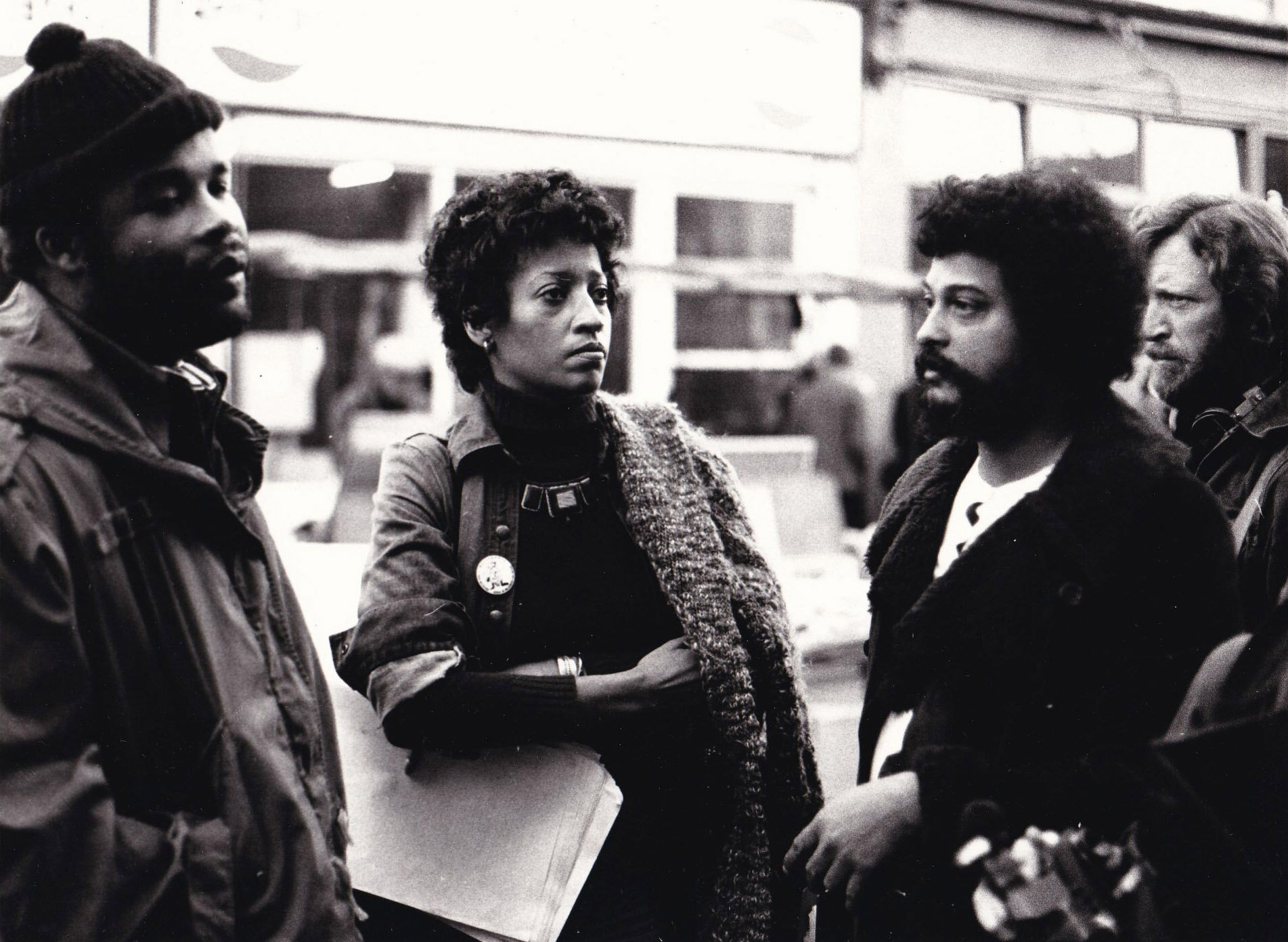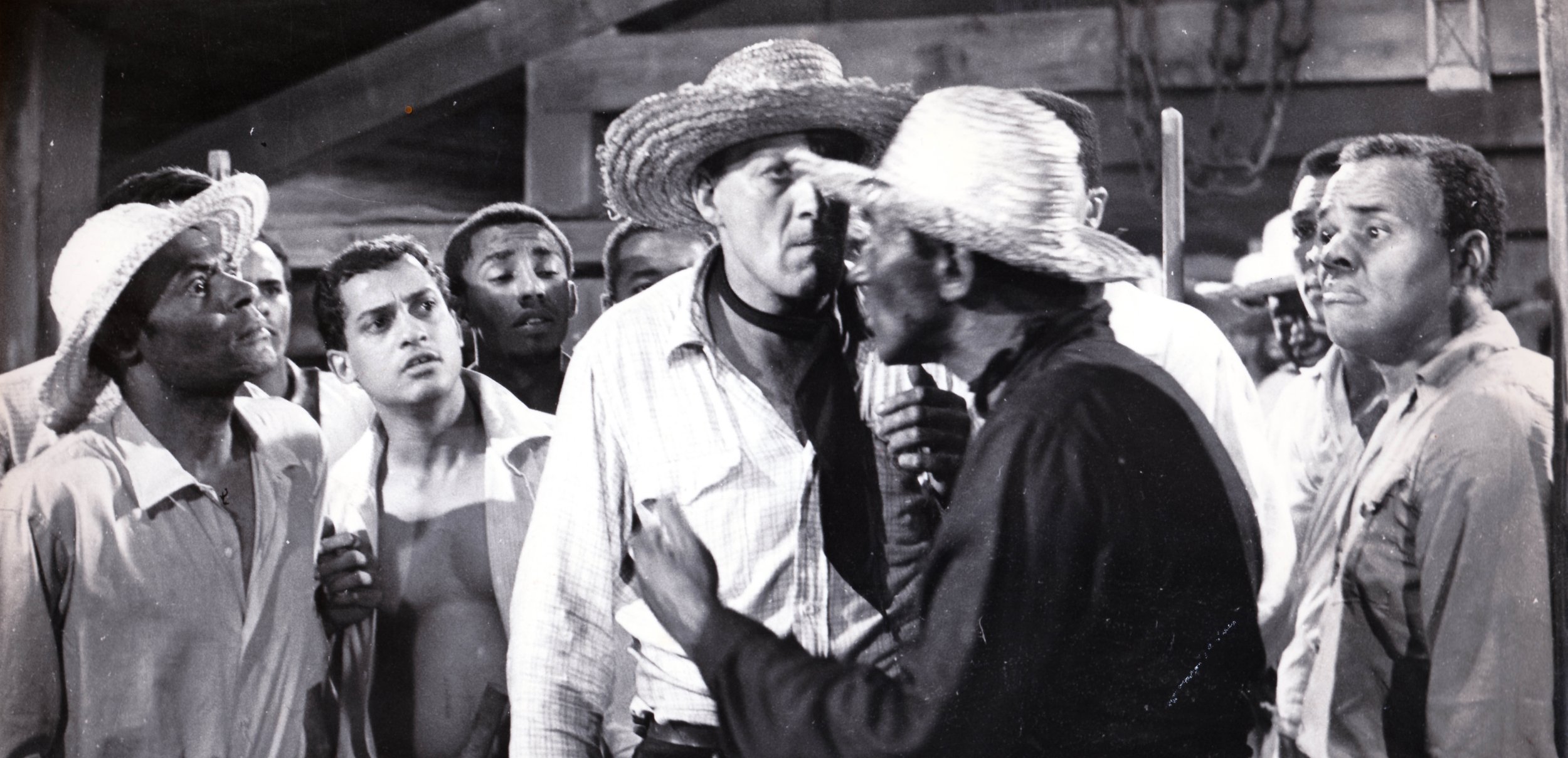biography
Filmmaker, photographer, writer and painter Horace Ové was born in Belmont, Trinidad in 1936. The multicultural island provided an early base of inspiration and understanding for his later interests and career. In World War II Trinidad had seven American military bases, and because of this a large contingent of American soldiers populated the island. As a consequence over 100 cinemas were built to keep the troops entertained. Films from all over the world were shown; from South America, Europe and Hollywood. These films were Horace’s first view of the world at large and the initial catalyst for his journey to becoming a filmmaker.
He came to the UK in 1960 to study interior design. Faced with racist attitudes and poor living conditions, Horace worked various odd jobs including as a porter in a local hospital, and on a fishing trawler in the North Sea. To supplement his income he worked as a film extra including on Cleopatra which gave him his first real experience of the film world. As luck would have it, the entire production was taken to Rome including all the background extras to complete filming. Rome at that time had a thriving film industry producing everything from B Westerns to melodramas and Neo-realist cinema. Feeling a kinship with the more open culture that reminded him of home, Horace remained in Rome after Cleopatra had finished filming. He earned a living as a painter and photographer. He often was at Cinecitta studios, and was inspired by directors like Fellini and Antonioni to go to film school. As he did not speak fluent Italian, he returned to London and in 1965 attended The London School of Film Technique, now the London International Film School.
His experimental film documentaries focused on subjects across the Black Atlantic: Baldwin in London (1969), Carnival in Trinidad (1973), the first appearance of Reggae in London (1970), and the cultural and political activism of John La Rose, founder of New Beacon Books in London.
Along side his film work, Horace’s early photographic work captured the Black Power movement and counter-culture in London. Writers and thinkers arrived in the UK from around the world to discuss civil rights issues and form new movements. Horace was at many of the meetings and captured iconic images of the events as they unfolded. Capturing images of Michael X, Stokely Carmichael, Darcus Howe, John Lennon, Yoko Ono, and other leading figures in the Caribbean Artists Movement. He has continued to capture images, social, political figures and moments in history as well as finding the beauty and surrealism in every day life.
Ové is cited in the Guinness Book of Records as the first black British filmmaker to direct a feature length film with Pressure in 1975. His work, characterised by innovative treatment of sometimes controversial subject matter, makes him a model for emerging film makers. As the British Film Institute states in 100 Years of Cinema: “Horace Ové is undoubtedly a pioneer in Black British history and his work provides a perspective on the Black experience in Britain.” More importantly, his work demonstrates a world view developed through having lived, worked and travelled in many countries – in the Caribbean (including his native Trinidad), in Britain and other parts of Europe, Africa and the Indian sub-continent.
Ové stated about his works, “I wanted to show that black people were fighting for their rights under a very racist situation and... were finding ways and means of demonstrating their feelings". His importance as a film-maker therefore lies not just in his being the "first" Black director to break into the mainstream of television, but also in the committed political voice he retained once he had got there.






